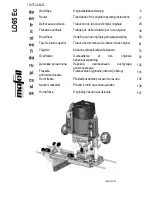
C
ONFIGURING
THE
S
WITCH
3-106
•
When an ACL is bound to an interface as an egress filter, all entries in
the ACL must be deny rules. Otherwise, the bind operation will fail.
•
The switch does not support the explicit “deny any any” rule for the
egress IP ACL or the egress MAC ACLs. If these rules are included in
an ACL, and you attempt to bind the ACL to an interface for egress
checking, the bind operation will fail.
The order in which active ACLs are checked is as follows:
1. User-defined rules in the Egress MAC ACL for egress ports.
2. User-defined rules in the Egress IP ACL for egress ports.
3. User-defined rules in the Ingress MAC ACL for ingress ports.
4. User-defined rules in the Ingress IP ACL for ingress ports.
5. Explicit default rule (permit any any) in the ingress IP ACL for ingress
ports.
6. Explicit default rule (permit any any) in the ingress MAC ACL for
ingress ports.
7. If no explicit rule is matched, the implicit default is permit all.
Setting the ACL Name and Type
Use the ACL Configuration page to designate the name and type of an
ACL.
Command Attributes
•
Name
– Name of the ACL. (Maximum length: 16 characters)
•
Type
– There are three filtering modes:
-
Standard
: IP ACL mode that filters packets based on the source IP
address.
-
Extended
: IP ACL mode that filters packets based on source or
destination IP address, as well as protocol type and protocol port
number. If the “TCP” protocol is specified, then you can also filter
packets based on the TCP control code.
-
MAC
: MAC ACL mode that filters packets based on the source or
destination MAC address and the Ethernet frame type (RFC 1060).
Summary of Contents for 8708L2
Page 2: ......
Page 24: ...TABLES xxiv ...
Page 28: ...FIGURES xxviii ...
Page 290: ...CONFIGURING THE SWITCH 3 238 ...
Page 584: ...COMMAND LINE INTERFACE 4 294 ...
Page 592: ...TROUBLESHOOTING B 4 ...
Page 605: ......
















































